It's risky business fighting Intel, AMD, and Arm, and that's exactly what Star Five is trying to do with this:
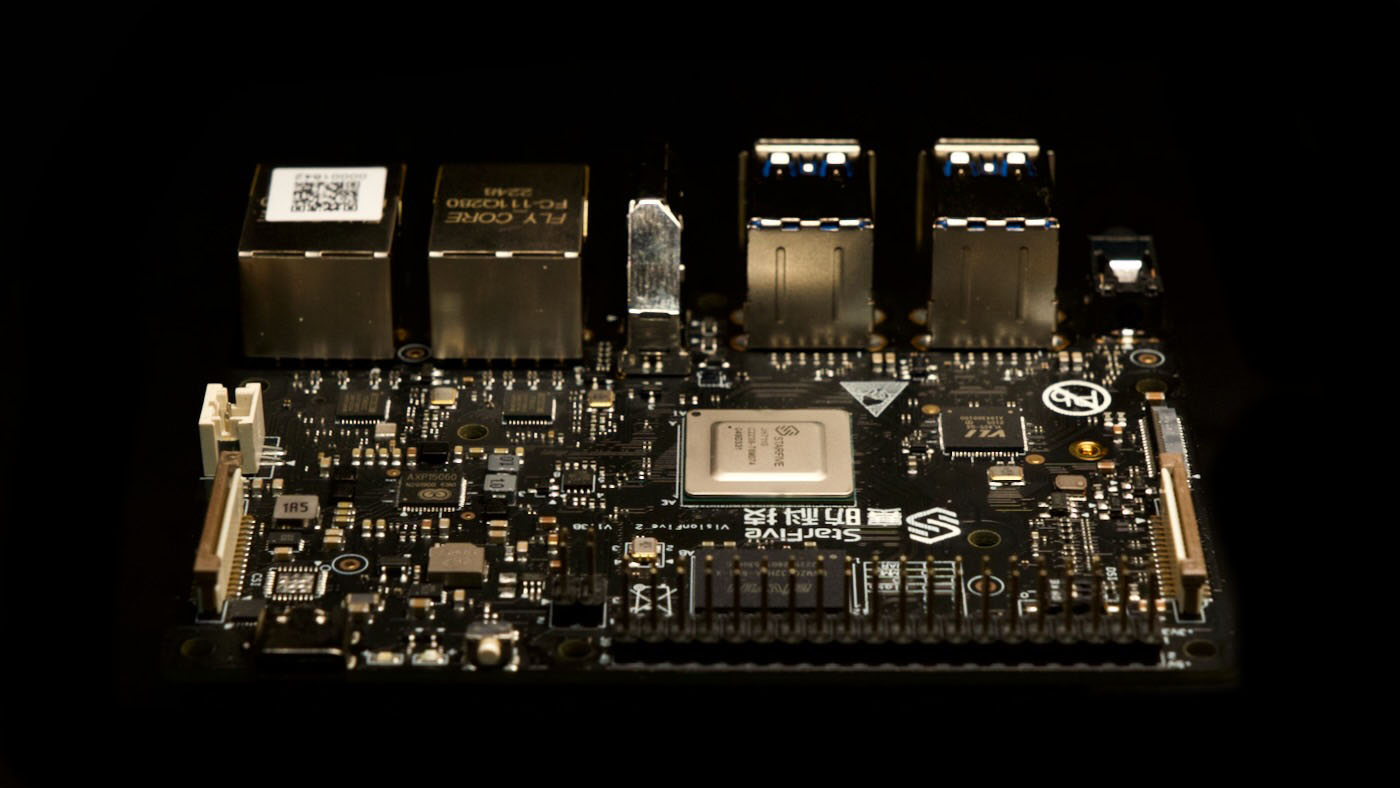
The chip on this new single board computer could be the start of a computing revolution—at least that's what some people think!
The VisionFive 2 has a JH7110 SoC on it, sporting a new Instruction Set Architecture (ISA) called RISC-V.
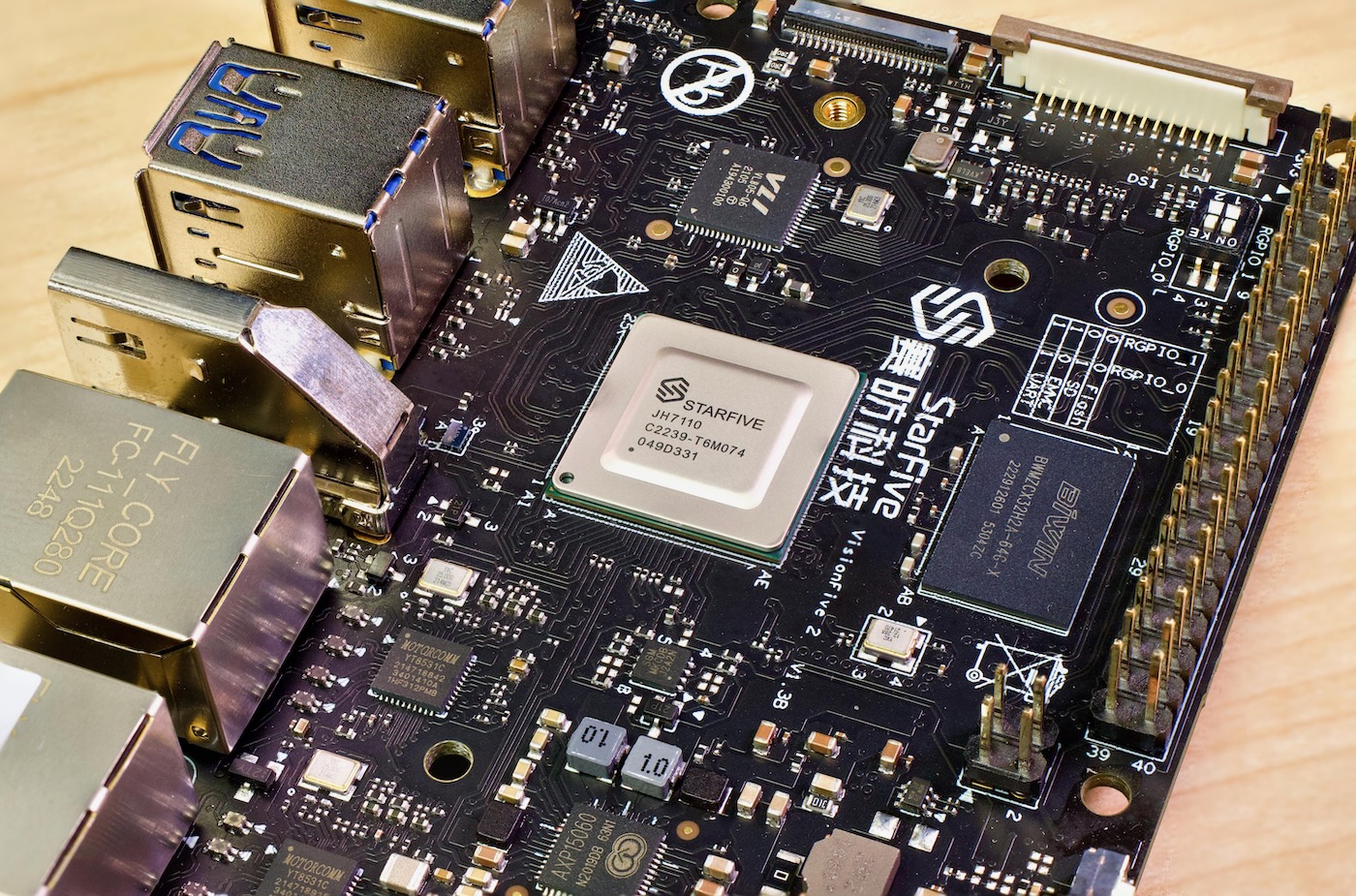
On board are four 1.5 GHz CPU cores, so it's no slouch. And the one I'm testing is the high-end configuration, with 8 gigs of RAM, an M.2 slot, USB 3.0, and two Gigabit Ethernet ports.
On paper, this board looks like it can compete with something like a Raspberry Pi. Can it?
Yes and no.
RISC-V is the new kid on the block. It's so new software isn't really optimized for it yet. And some software won't run at all.
But a lot will. Especially if we're talking about Linux.
Video
This blog post is a lightly-edited transcript of the following video—feel free to either watch the video or read the rest of the blog post:
StarFive sent me the board I tested in this review, but I also have an order in for another one. I welcome another competitor in the chip space, especially when there's a more open community around it.
Intel's X86 architecture and ARM's instruction sets are tightly controlled and licensed. RISC-V has an 'open' architecture—though individual designs (like the cores used in the JH7110) are often proprietary and licensed, since that's how chip manufacturers make money.
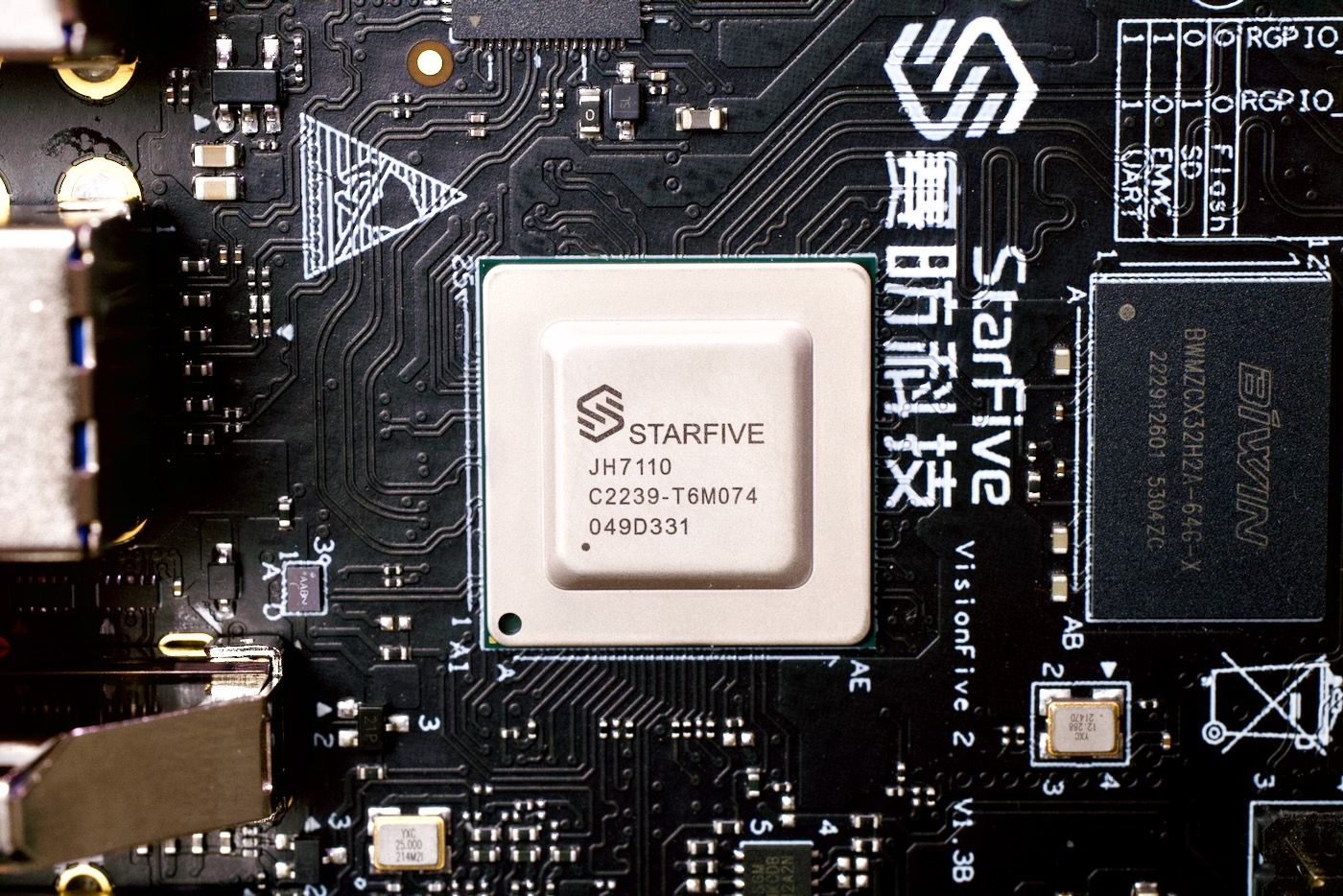
A few years ago I would've said RISC-V had a huge hurdle for adoption. But now, with a new geopolitical landscape, trade wars, and the lawsuit between Qualcomm and Arm... eh... maybe it's not so risky after all!
But back to this board. This is the first mass market RISC-V board with compelling hardware specs. So what should you expect if you pick one up?
Initially, not much.
Bringup
Like many other boards that I've tested from Chinese manufacturers, the initial experience is a bit jarring, especially if you're new to SBCs.
But considering the entire architecture's new, I'm willing to cut it some slack. It's still better than most of the Pi clones—but that's not saying much.
The board was hard to bring up. I had to dig into some forum threads and eventually this blog post to figure out how to upgrade the firmware, just so I could install the latest OS.
Upgrading the firmware involved running a special buildroot image and logging in with SSH, so already, just to start using the board, it's not simple.
And then I had trouble with HDMI! The GPU supposedly handles 4K, but I couldn't even get it working with my old HD monitor. I tried debugging it with modesed and tried different cables, but I just couldn't get it working. Eventually I was able to get my Atomos Ninja V working, at least, but it seems like HDMI is a little buggy right now.
To add insult to injury, when I went to log in over SSH I tried following the getting started guide. But I found out it had the wrong login user. It should be 'user' but the guide said 'root.' (Note: Default SSH behavior has changed in the most recent image.)
Knowing it's not a true plug-and-play experience, how does this thing perform?
Well, right now, not that well.
Benchmarking
Before I show you any test results, I have to warn to you take them with a grain of salt. My results today might be different than someone re-testing everything in a month, or even a year from now.
And that's because RISC-V and the processor on this board are so new that there are thousands of little optimizations that aren't even made yet. Most developers who could make those optimizations don't even have RISC-V hardware to test 'em.
Especially for things like basic math operations or cryptography, this chip looks glacial. In some ways it isn't, but it's not always clear if that's a hardware issue or software.
I want compare the VisionFive 2 to two boards you might be more familiar with: the Raspberry Pi 3 B+, and the Raspberry Pi 4.
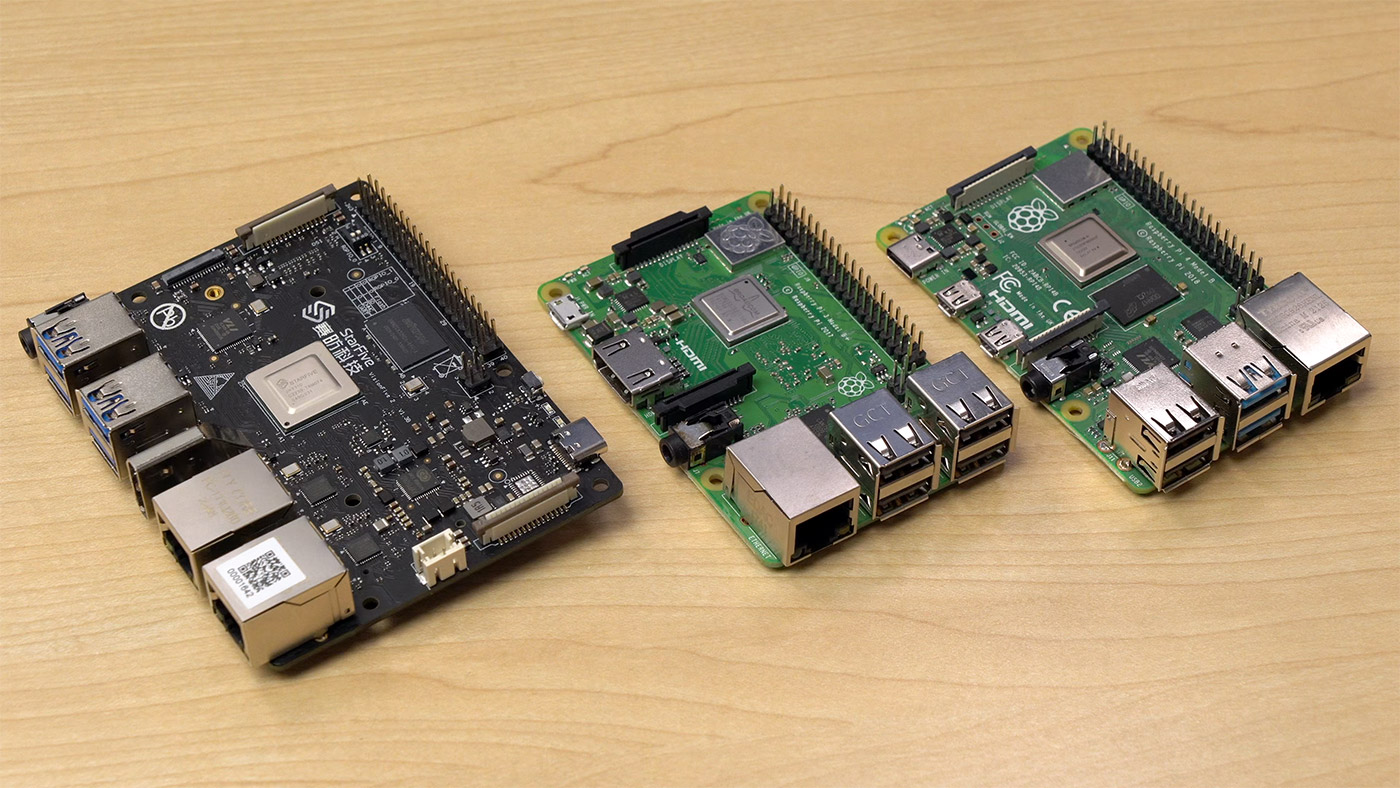
Putting aside availability, the VisionFive 2 is marketed as something between those two boards, but not quite as good as a Pi 4.
So how is it?
Well, just running a basic benchmark like Geekbench, the VisionFive 2 scored 78 single core and 276 multicore.
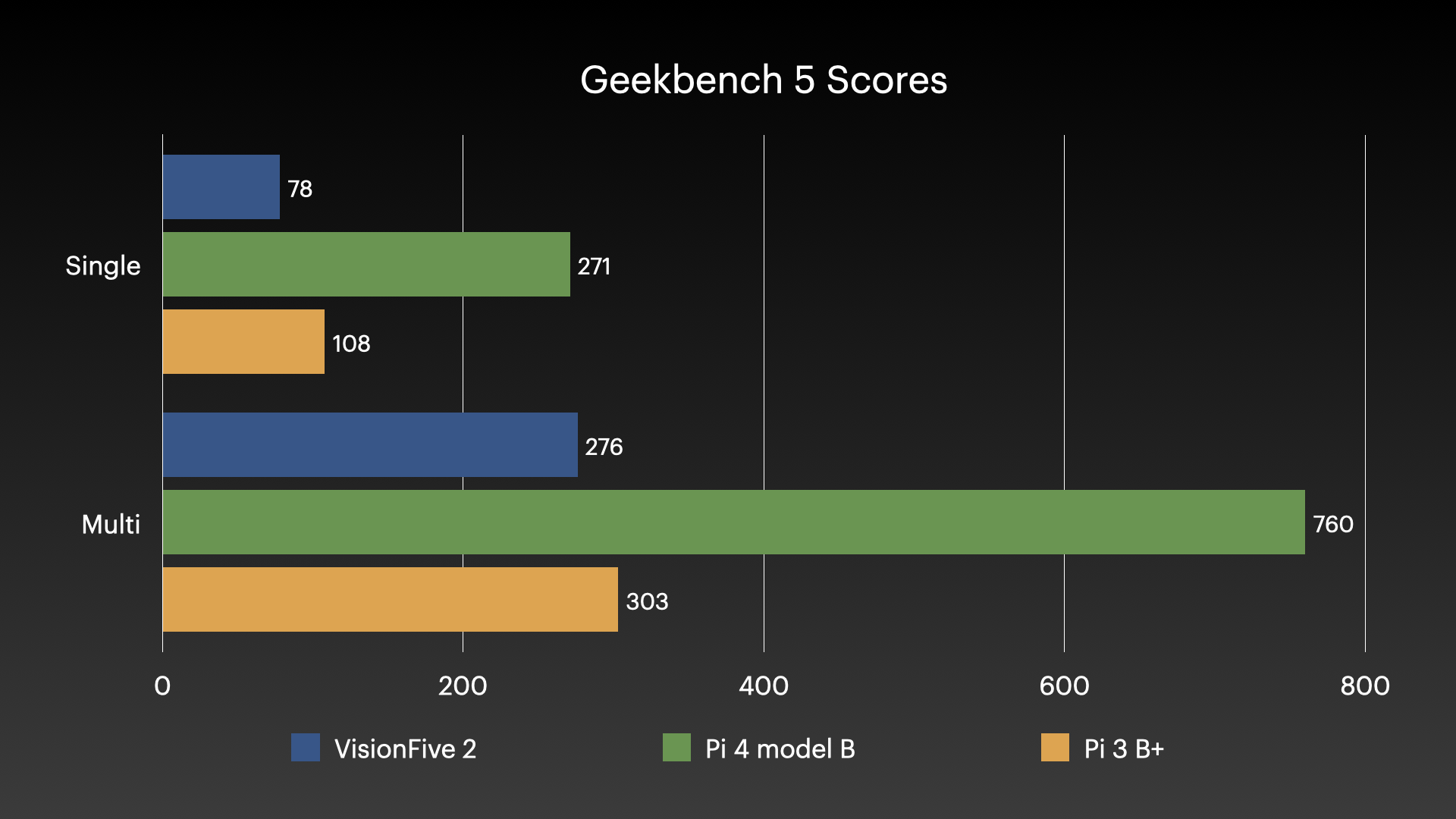
It's a LOT slower than a Pi 4. And it's even noticeably slower than a Pi 3 B+.
But looking deeper at the individual test results, it seems the VisionFive 2 scores especially bad in image-related tests (like Camera, Gaussian Blur, and Structure from Motion). And for Machine Learning, it's only getting 2-4% of the performance of the Pi. What gives?
Reading Geekbench's documentation, it says the Machine Learning workload "performs an image classification task" with a small image. So, another image-based test.
It uses MobileNet v1, an older machine learning model that's probably not optimized for the chip on this board. But it's not like Geekbench's results are useless—if you buy this board today, then for some things it really is that much slower.
Like when I logged in over SSH, the initial login is noticeably slower than the Pi. And image processing and cryptography will be a lot slower on this board.
The lag is bad enough it feels like I'm working on an original Raspberry Pi sometimes.
I also wanted to run linpack to test floating point performance, but I had trouble compiling the Python cryptography library, so I put that on hold.
Before the RISC-V apologists crucify me, I'll add that the JH7110 isn't the only RISC-V chip on the market. And this year other chips which will do better on image processing, neural nets, and encryption are coming.
This is a review of one particular board that happens to be RISC-V. Not the entire RISC-V ecosystem—keep that in mind.
IO Performance
Moving on to IO performance, I tested both gigabit Ethernet ports, and they both pumped through a full gigabit on their little Motorcomm NICs, so no complaints there.
But what I really wanted to test is the M.2 slot on the bottom. It's got one lane of PCI express Gen 2, just like the Pi 4. On a Compute Module 4, I can get 350-400 MB/sec with a good NVMe SSD.
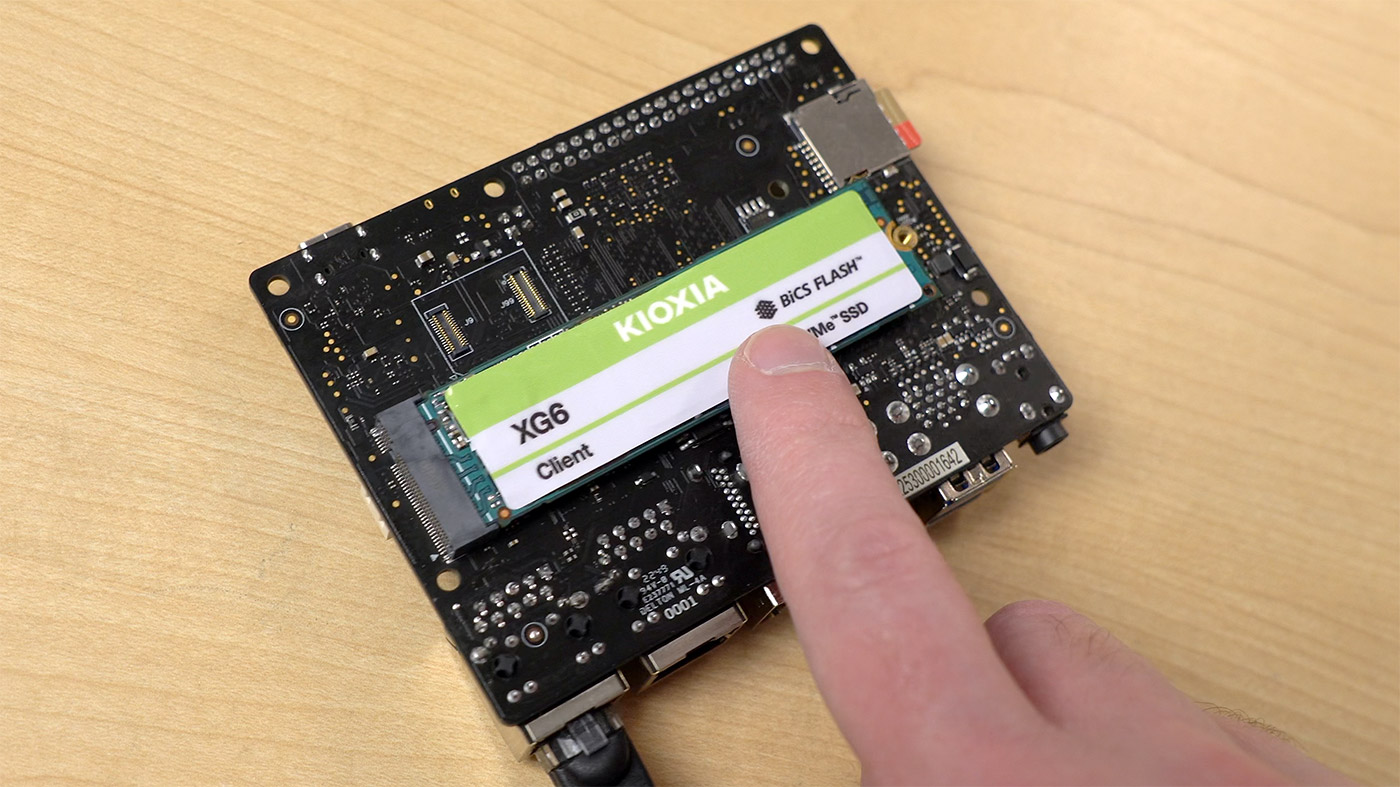
Testing the VisionFive 2 I only get about 250 MB/sec. The drive showed up at the correct speed but the board just couldn't put through as much data.
And the built in microSD card slot isn't that fast, either—I only got about 24 MB/sec. The Pi 4 gets double that, so again, this board is more in line with a Pi 3. More of my test results can be found here.
Integrated GPU
Next, what about the GPU? One big marketing point is the VisionFive 2 is the world's first high-performance RISC-V computer with an integrated GPU!
The hardware supports HDMI 2, with H.264 and 265 decoding at 4K courtesy of an Imagination BXE GPU.
But can we even use it? One of the curses of Single Board Computers is how hard it is to get the GPU to do anything in Linux. Watching 1080p video on YouTube is a typical use case, and on this board, it's excruciating.
Just opening YouTube is painful enough—it took 30 seconds just to get to the home page! And once you get a video to load, playback is glacial. At HD resolution, almost all the frames were dropped.
It's early days, so the experience should get better. A lot is being worked on right now, like this pull request that gets hardware acceleration off the ground.
But forget all that. This thing has an M.2 slot, which means I can take my M.2 to PCIe x16 adapter and plug in anything I want!
PCI Express Shenanigans
I found this forum post about someone else already having some success getting an AMD graphics card working, so I pulled out my old Radeon HD 7470, grabbed a copy of Linux, and compiled my own custom kernel.
Surprisingly, compiling Linux for RISC-V using StarFive's Linux fork was easy. I enabled the radeon kernel module, then compiled it on the board. It took about an hour.
Once I copied the new kernel in place and rebooted, the GPU worked!
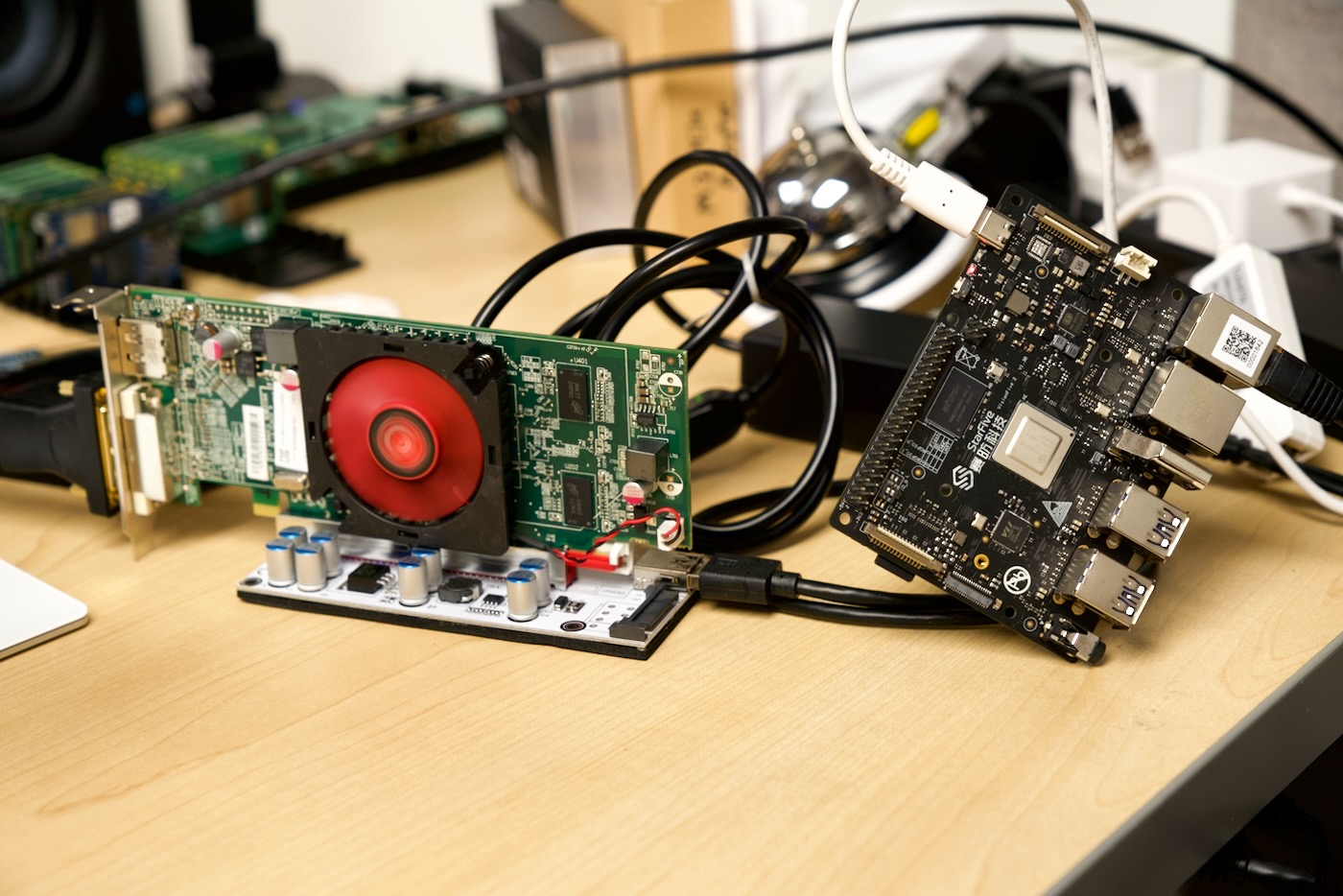
On the Raspberry Pi, I ran into memory access bugs, and we had to write a bunch of ugly hacky patches. I was expecting it to be even worse on an entirely new architecture, but it wasn't!
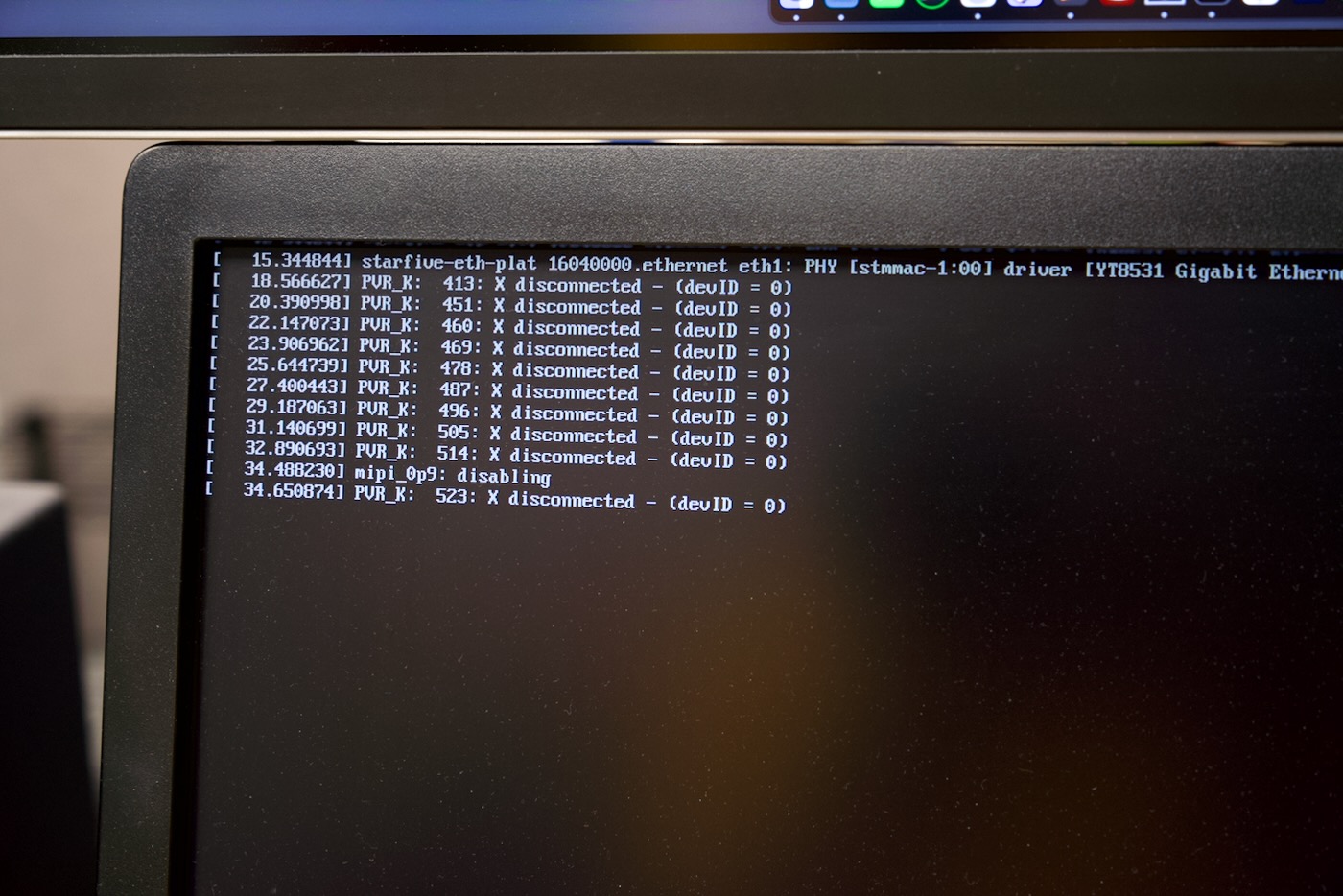
I did run into this weird issue where the screen flashes for a while and all these "PVR_K" errors popped up on the screen. So it's not entirely usable yet, but I think there's definitely more fun to be had here.
Trying an Nvidia GTX 750 Ti, the open source nouveau driver made the system freeze up, so I put that on hold—it's likely I ran into a power issue and I'll have to revisit it later.
René Rebe also get a newer AMD card working on another RISC-V board, so maybe RISC-V has a leg up on Arm—at least for these tiny SBCs. Getting graphics cards running on low end Arm is painful.
I also checked into hardware video transcoding, but like I said earlier, that's still being worked on. The VisionFive 2 could be useful for things like Plex or Jellyfin—someday.
Power Consumption / Efficiency
All that would be for naught, though, if this thing isn't also efficient. And it's not gonna take the crown, but it's decent, using 3W at idle, and a little over 5W fully stressed.
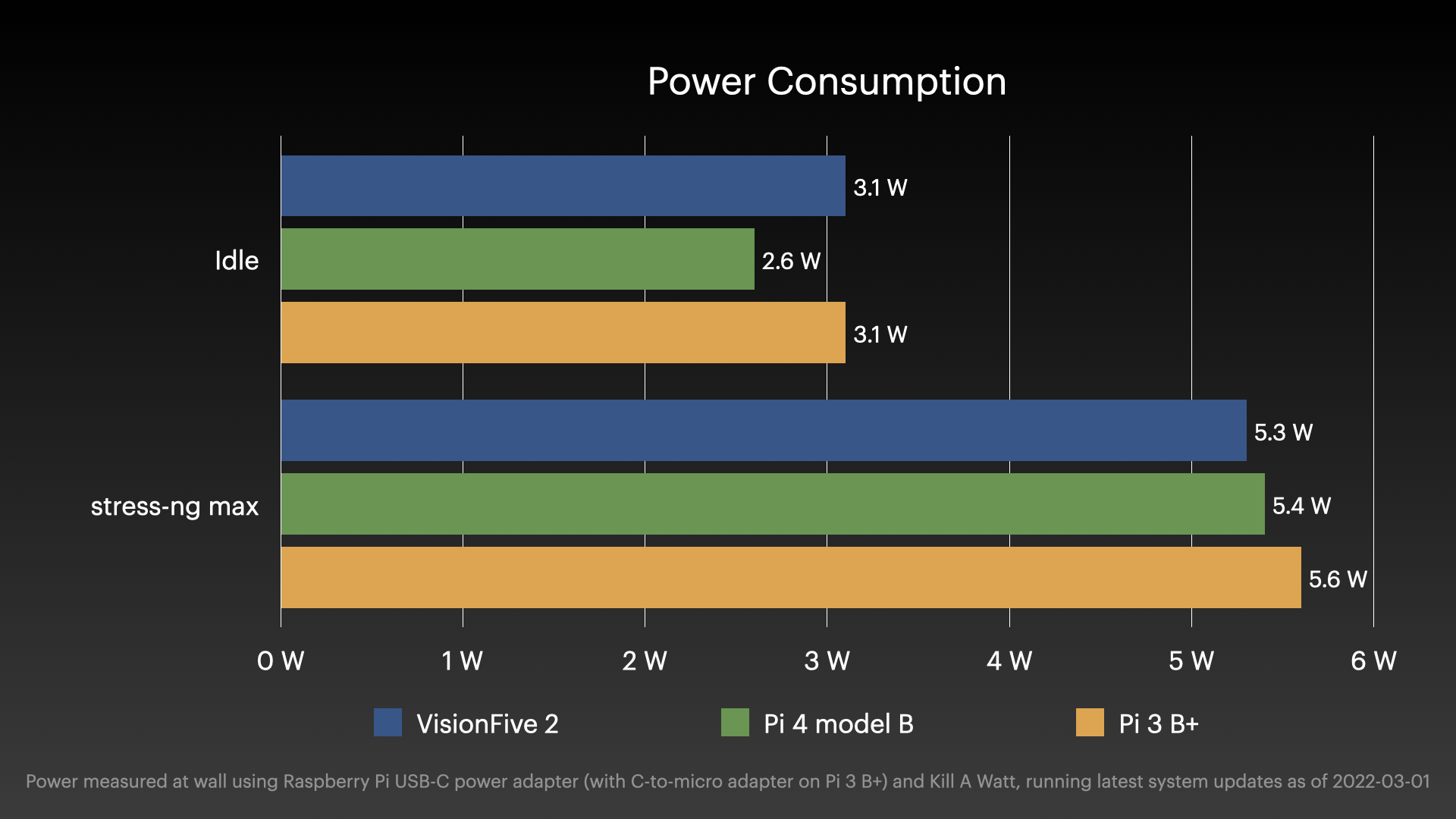
This board could be an efficient homelab companion, as long as the software you need can run on it. I haven't had a chance to test other things like Home Assistant or Docker, but I know for many things, just getting the software running right now can be painful.
Conclusion
But Arm boards—even the darling child Raspberry Pi—were in a similar state a decade ago. StarFive is coming into an already-crowded market and already creating a lotta buzz.
Right now between the Raspberry Pi shortage and the clone manufacturers dropping the ball on software and support, RISC-V SBCs have a prime opportunity.
My biggest question—and I'm not sure if this is praise of the RISC-V community or condemnation of the Arm status quo—is this: How is it that this fledgling RISC-V board, barely off the ground, already has documentation and support that's miles ahead of most other SBCs?
Besides a few small warts in the getting started guide, the documentation is pretty good. The forums are active, and I didn't have to lurk on Discord just to get help.
And compared to the Raspberry Pi, well, the Pi isn't unimpeachable, but the VisionFive 2 definitely isn't the board to take away its crown.
What it is, is an early warning shot across Arm's bow. If each RISC-V board improves at the pace the Pi has over the years, we could see a more competitive landscape, when it comes to energy efficient Linux SoCs.
The JH7110 isn't amazing. But it's not bad, either.
I still wouldn't recommend most people buy this board, unless you already know a lot about Linux and SBCs in general. That may change a year from now, but right now, this board isn't targeted at the same market as a Raspberry Pi.
At around $100, and not being quite production-ready, I'm only recommending this board to people interested in exploring RISC-V for now.
But that's the 'risky' business StarFive finds themselves in today.
Comments
I bought a StarFive a while back, and ran into the same issues you did. This article is actually a good reminder that ultimately I put the SBC into a drawer along a bunch of other SBCs that I had high hopes for, but ultimately disappointed me.
I would love to have a viable RISC-V SBC. The challenge, and this is apparent with the myriad Raspberry Pi clones, is that the focus has to be on usability first, everything else second. I've been disappointed that the biggest player in this space, SiFive with its extensive RISC-V influence, hasn't done more to push for a Raspberry Pi competitor.
In my opinion the Raspberry Pi, being offered at a pricepoint that allowed any hobbyist to get a full-featured Linux system, was a total game changer. What a great way for a CS student to easily jump in, start writing code, tweaking the kernel, etc.. Or a teenager to start to learn web development. I'd really like to see RISC-V in this same space, but until they can get it to be plug and play, it's not goign to happen.
You're going to find that, "plug and play," definitely wasn't in the ARM chips until RPi shoved it into the spotlight and stabilized a lot of things for that ecosystem. This is akin to the pre-Pi space in ARM. You had to be someone like myself working on things to get any real USE out of the boards back then. Y'all are spoiled, to be honest... X-D
I never HAD plug and play until we all made it more that way. Hell, I didn't have the fancy GPU drivers in the OS, I had to bolt the SOB on like all of the rest of the Utah-GLX team had to do. ;-D
It is a early adoption board, what do you expect? They are still developing drivers for the hardware. Almost nothing is in the mainline kernel (yet). I have a lot of fun with the board and will wait for better kernel support and GPU drivers. See my projects. https://github.com/Opvolger/Opvolger/blob/master/starfiveVisionFive2.md
While what you say is true, early adoption boards eventually become mature boards, and still almost nothing works most of the time. I feel is frustration because I too have a bunch of boards that never got updates, and never really worked. Time will tell, but if 3 years from now 4k still doesn't work, and the board can't even play 480p video without stuttering, then it will have been quite a disappointment indeed.
It doesn't show up in the video benchmarks since they use the GPU, but the reason it's scoring poorly on the image benchmarks and compression test is because those are usually optimized via vector instructions but that particular SoC (U74 I believe it's called) doesn't have rvv extensions support.
That's...unsurprising.
One of the things people keep needing to remind themselves of...some things this is going to be good. Some it's not.
Until you have a few more passes of things like this put into the hands of folks like myself, well...it's not going to be the same story as the Pi boards.
A couple of weeks ago I added support for this board in the ISAR build system (~yocto for Debian). This is currently under review, as the maintainers did not have the hardware back then. This includes proper support for EFI boot, which is missing in the SDK from starfive. When working on the BSP, I discovered many bugs and shortcomings. but the corresponding patches were happily accepted by the upstream projects. That's good, but also shows that the currently available RISC-V boards are not for a broader audience of users yet. Also, the quick HW iterations of the SoCs (e.g. JH7100, JH7110) make it hard for the software side to keep up. This includes device-trees, memory ranges and mapping of GPIO pins which all have to be re-modeled.
Finally, many people ask you why writing the BSPs is so complicated while Debian/Fedora/OpenEuler/... already have support for RISC-V. Unfortunately, there is a fundamental miss understanding what "supported" means: Am I able to bootup some example workload via a hand-crafted boot chain with minimal HW features, or am I able to run standard workloads with full HW support. Especially in the industry, having support for standard boot chains based on EFI are a BIG advantage as this makes it possible enable software updates via A/B rootfs patterns across a variety of targets (in contrast to making the update board specific). Another issue that remains is the proprietary graphics part...
In the end, it is really fun to work with the early prototypes. But to reach a broader user base, RISC-V still has a long way to go.
I have a Beagle V beta board, with the JH7100. The driver support wasn't very good back in 2021, but I wonder if the work they've done in the last two years means it's worth trying again.
It might. I know I have one of these gems on it's way to me courtesy of the Linux Foundation and RISC-V consortium to do BSP and embedded work on them, being named a Seeder Project by both groups. We'll see. There's a smidge of a foundation in meta-riscv for the prior boards and I'm kind of one of the sorts that would make things happen to make it more of a general daily driver. I'm looking forward to seeing where we can make this go.
I've had one of these in a draw for a few months after inital testing
Realised this week Diet-pi now has an image for it tested it and its now a good candidate for sitting on my network as a motioneye server